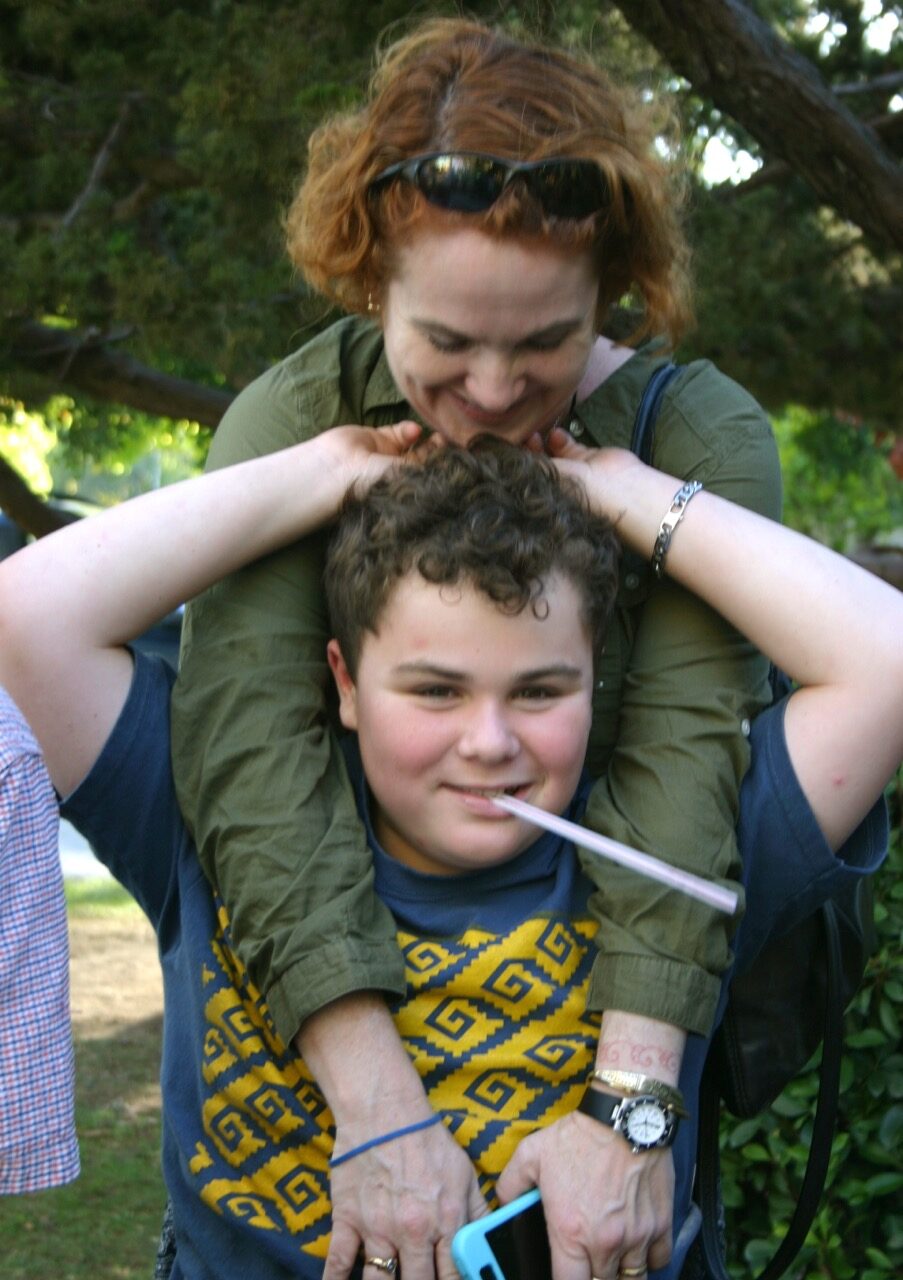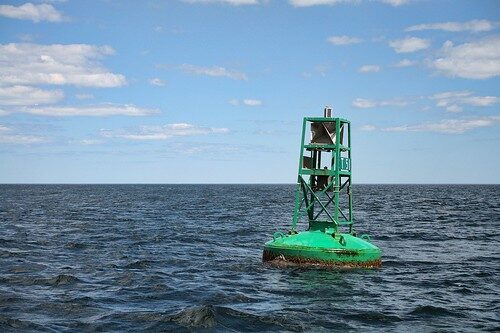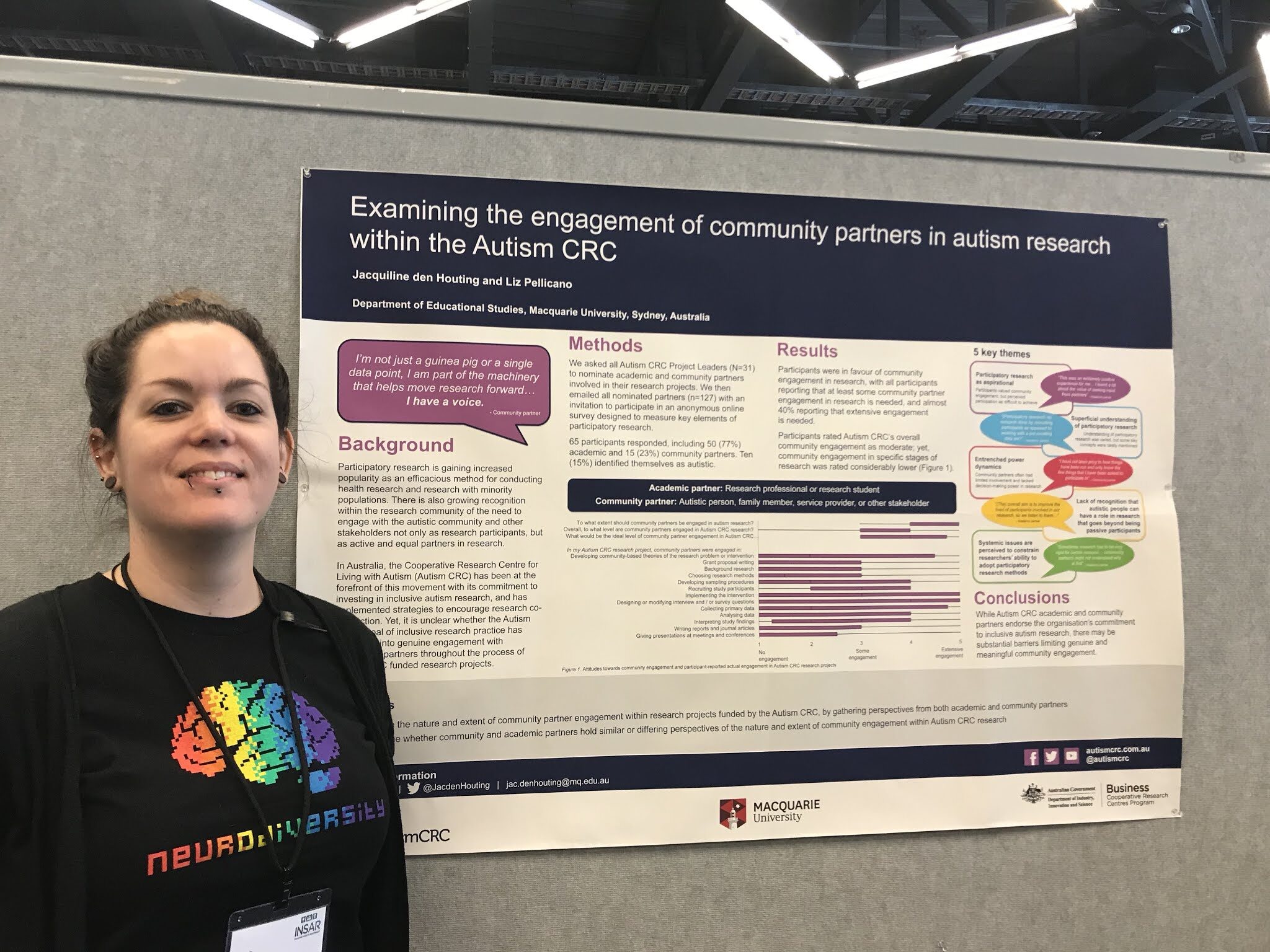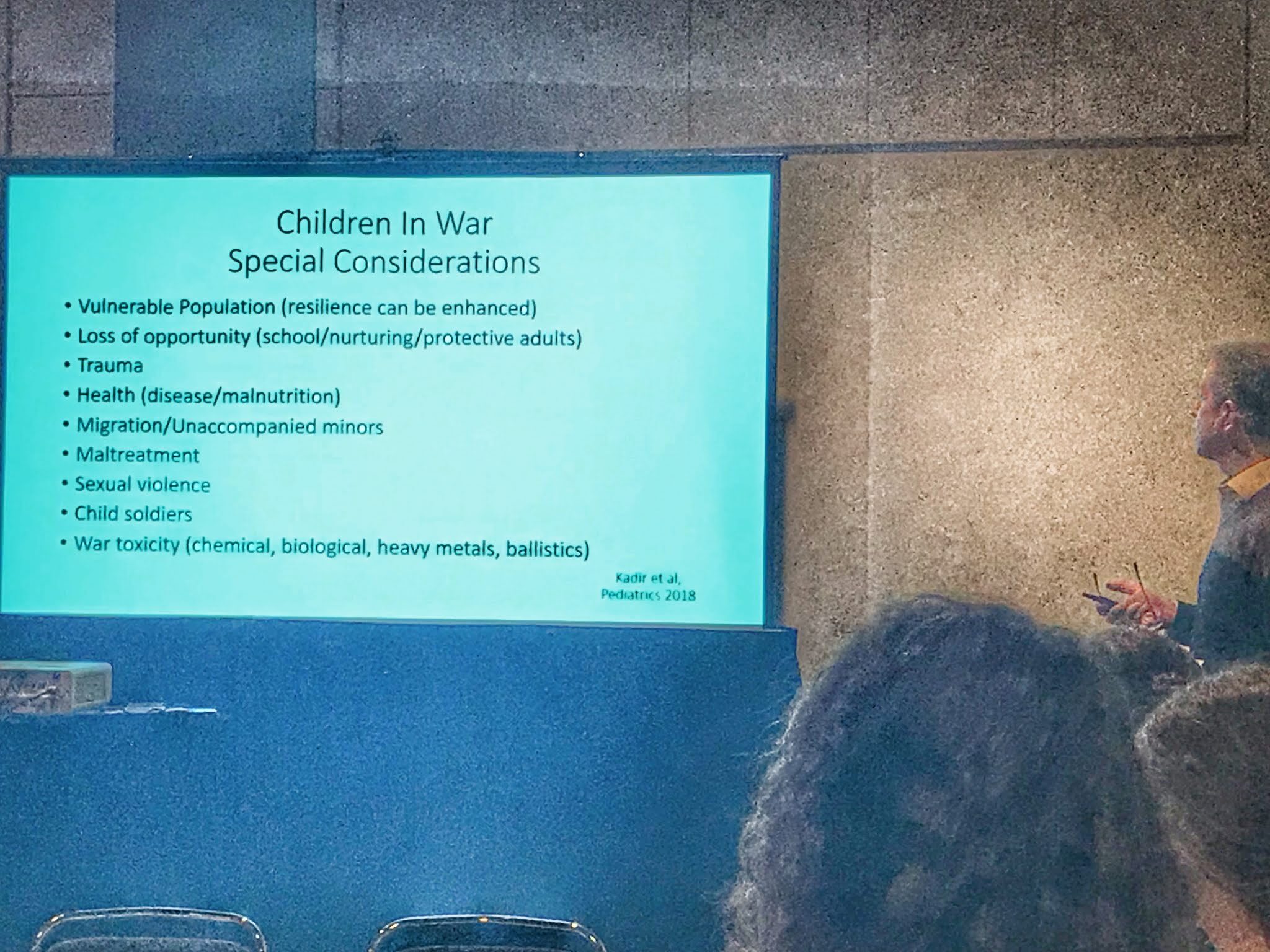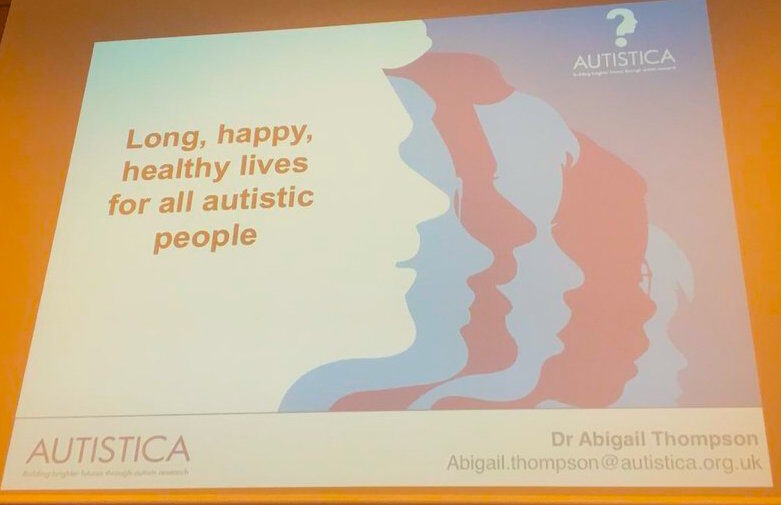Shannon Des Roches Rosa www.squidalicious.com Content note: This article discusses abuse and murder. Photo © Steve Silberman [image: a white woman, standing behind a white teen boy with brown curly short hair. He is looking at the camera. Her arms are over his shoulder, his arms are up and tickling under her chin.] When parents like me talk about our kids with disabilities and intense support needs, we have to be thoughtful. We need to make it quite clear that our kids are much-loved and very awesome human beings. We should never, ever state or imply that any challenges we face as a parent are our children’s fault. We need to handle their privacy with delicacy. And we shouldn’t accidentally enable disrespect towards children who are already too-frequent magnets for morbid fascination, and pity. But we do need to talk, because our parenting gig is not like other parenting gigs.…
Year: 2019
Cal Montgomery Photo © Teresa Alexander-Arab | Flickr / Creative Commons [Image: A green buoy on the surface of a body of water on a sunny day.] Autism is not behavioral. Atypical behavior is not autism. It is a consequence of autism. It is surface markers by which what is underneath may be suspected, diagnosed, and investigated. Altering behavior doesn’t alter autism. Everything we recognize has surface markers. Fear, for instance, may look like a cold sweat, breathing hard, and dilated pupils, but that is not what fear is. ABA, the most popular monopoly for interacting with autistics, denies the “underneath.” It says that the surface markers are all that matter. It is profoundly dehumanizing. It is also a worldview that is almost impossible to maintain. When you call autism a behavioral disorder—and I am not touching the “disorder” part right here but I also do not accept it—you are focusing…
Shannon Rosa Senior Editor The TPGA team attends INSAR, the annual meeting of the International Society for Autism Research, annually and has done so for eight years. We participate as journalists covering important autism research for our community, and also from our combined personal investments as parents of high-support autistic teens, autistic self-advocates, and autism professionals. I found INSAR 2019 to be the most progressive annual INSAR meeting since I first started attending in 2011, going by TPGA’s priorities of spotlighting research addressing the health and well being of existing autistic people, centering improved autistic quality of life as an optimal outcome, and increasing and acknowledging participation of autistic people themselves. I also appreciate seeing an increasing emphasis on autistic people and their families’ day-to-day under-recognized concerns, including co-occurring conditions like GI issues and sleep disturbances, practical considerations of transitions to adulthood, suicidality and other mental health matters, physical activity,…
Today’s INSAR 2019 Special Interest Group (SIG) on Gender, Sexuality, and Romantic Relationships was led by Laura Graham Holmes and Jeroen Dewinter, and co-led by Anna van der Miesen. Essentially, relationships and sexuality are central to everyone’s health and well-being. But there isn’t enough useful research and materials available fo autistic people of all ages and abilities, their families, and healthcare professionals, and many have expressed the need for research and guidance. So that’s what the SIG leaders and the participants in this well-attended session talked about. Any errors or omissions in the highlights below are on us. SIG participants Sara L, Dori Z, Jac dH, and Christina N, in discussion [image: Four people of varying gender identities and neurotypes, talking at a conference table.] Last year’s Gender, Sexuality, and Romantic Relationships INSAR SIG was about determining the most important issues for the autistic community, in terms of gender and…
Yesterday we attended the INSAR 2019 panel Where Do We Go from Here? Learning How to Prevent Suicide in Partnership with Autistic People and Their Allies, led by Sarah Cassidy from Nottingham University who has been doing this for four years now. Here is what the speakers had to say. (Any errors or omissions are on us.) The most important panel of the #INSAR2019 conference, chaired by @Sarah_NottsUni who is leading innovative and potentially life-saving research to understand and help prevent suicide in autistic people. pic.twitter.com/oSoQetMQI5 — Alexandra Forshaw (@myautisticdance) May 3, 2019 More than 10K stakeholders worldwide have identified the top 10 priorities, with equal representation of #autistic people: What increased barriers do autistic people experience when seeking help which may put them at greater risk of dying by suicide? What are the risk and protective factors for suicide in autism across the lifespan? To what extent are autistic people…
Shannon Rosa Senior Editor [Note: This report is based on @thinkingautism live-tweeted coverage, and as such may contain errors or omissions.] Report from the INSAR 2019 Special Interest Group (SIG) Autism and Related Disorders in the Context of Humanitarian Emergencies. SIG summary: “UN figures estimate 48 million children are impacted by humanitarian emergencies, including armed conflict and natural disasters. Within this population, children with autism and developmental disorders are extremely vulnerable to poor short and long term outcomes. There is increased awareness of the vulnerability of these children but limited research based knowledge on how to best address their needs. We aim to launch a platform for communication and collaboration between autism researchers and key stake holders in the humanitarian setting to address this gap.” First up was Doctors without Borders and SIG leader Ramzi Nasir, a developmental pediatrician who worked in conflict zones. He asked: Can we use remote consultations…
Shannon Des Roches Rosa Senior Editor, TPGA [Content note: This article discusses suicidality and ableism] The 2019 International Meeting for Autism Research in Montreal begins today, so let’s discuss how autism conferences can best help the autistic people without whom autism conferences would not exist—based on how past autism conferences have gone, what can improve, and why participatory research (involving autistic people themselves) needs to be prioritized. Last year’s INSAR 2018 conference gave me some hope for the future of autism research. I’d never before seen anything like the slide below at any INSAR conference, not since I first started attending INSAR in 2011 (when it was still “IMFAR”). This Autistica slide, with the the motto of “Long, happy, healthy lives for all autistic people” encapsulates everything I want from INSAR presenters, and autism research: Photo: Sara Luterman [image: Projected slide showing a group of human faces in profile, facing…
What do autistic people need from autism research? What is current autism research doing right? How does research let autistic people and their families down, and why? And how can we convey these concerns to autism researchers? That is what #AutINSAR is all about: a conversation between autism researchers and autistic community members, both in person and on Twitter. We had fantastic conversations at IMFAR 2017 in San Francisco, and again at INSAR 2018 in Rotterdam, and are hoping for another fruitful discussion this year during INSAR 2019 in Montreal, Canada. AutINSAR will once again be a partnership between us and The Autistic Self Advocacy Network (ASAN), NOS Magazine, Autism Women and Nonbinary Network (AWN Network), AutChat, and We Are Like Your Child. We welcome new 2019 partners Flow Observatorium and Autistics 4 Autistics Ontario. #AutINSAR Partner Orgs: ASAN, AWN Network, NOS Magazine, TPGA, autchat, Flow Observatorium, and Autistic 4 Autistics…
Lily Levy at INSAR 2018 [image: Lily Levy, a white British woman, presenting a poster at an autism conference.] INSAR 2019, the International Meeting For Autism Research, starts in three days. Before we begin our coverage, we’d like to emphasize research and themes from last year’s conference INSAR 2018, in Rotterdam—so we can proceed with a grounded sense of how the two conference’s priorities compare and contrast, especially in terms of research that affects autistic people’s quality of life (QoL). A consistent QoL theme of INSAR 2018 was autistic camouflaging, also known as “masking” or “passing.” We spoke with Lily Levy, who led the INSAR 2018 presentation For Better or for Worse? Social Camouflaging, Mental Health and Wellbeing in Autistic Adults. Content note: Discussion of suidicality, bullying, and trauma. Shannon Rosa of TPGA: I’m at INSAR 2018 with Lily Levy, whose group presented the poster on Social Camouflaging, Mental Health and Wellbeing…
When we deny the validity of self diagnosis, we fail to recognize how broken health care systems can be. We effectively restrict our support to those privileged to afford a formal diagnosis.
